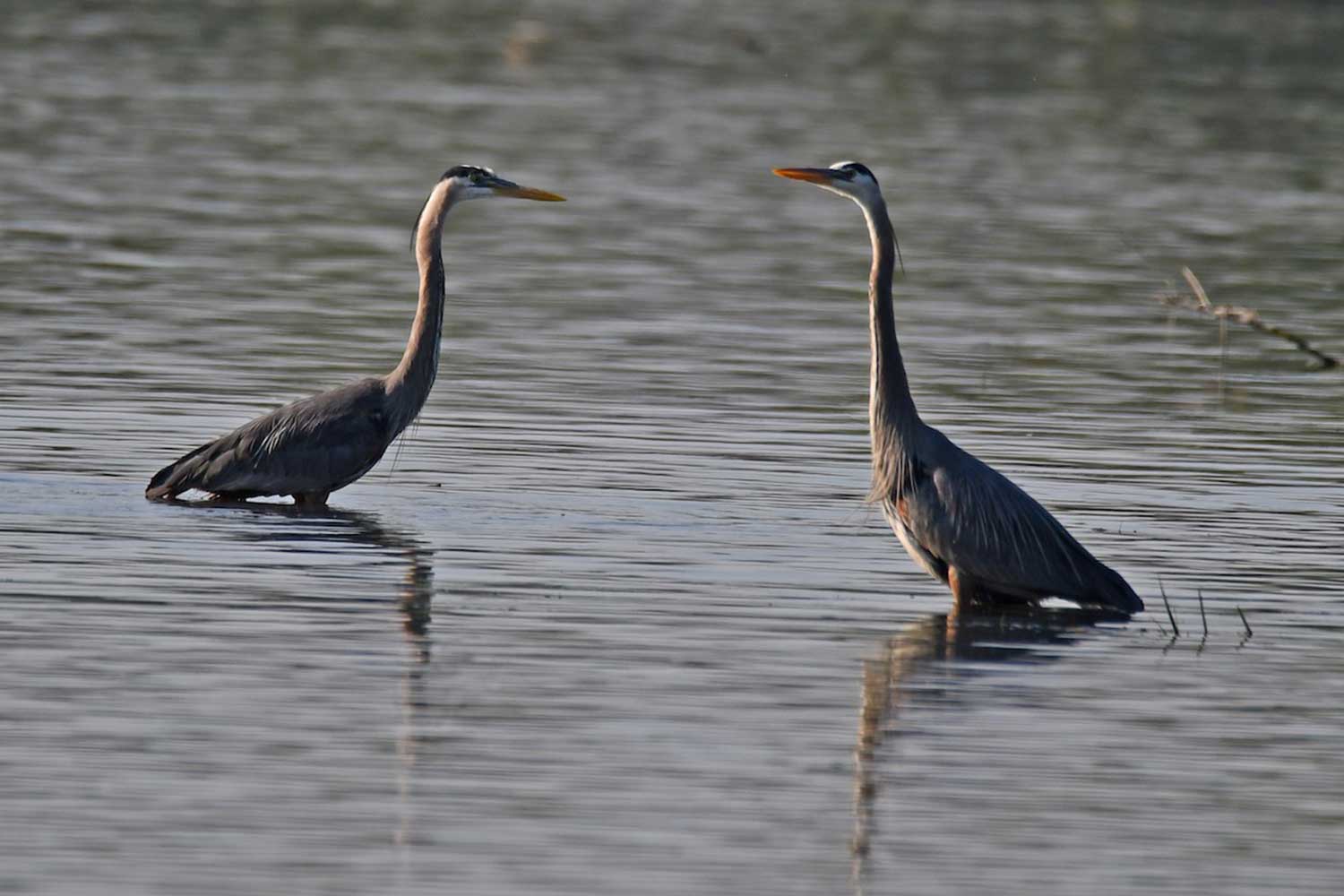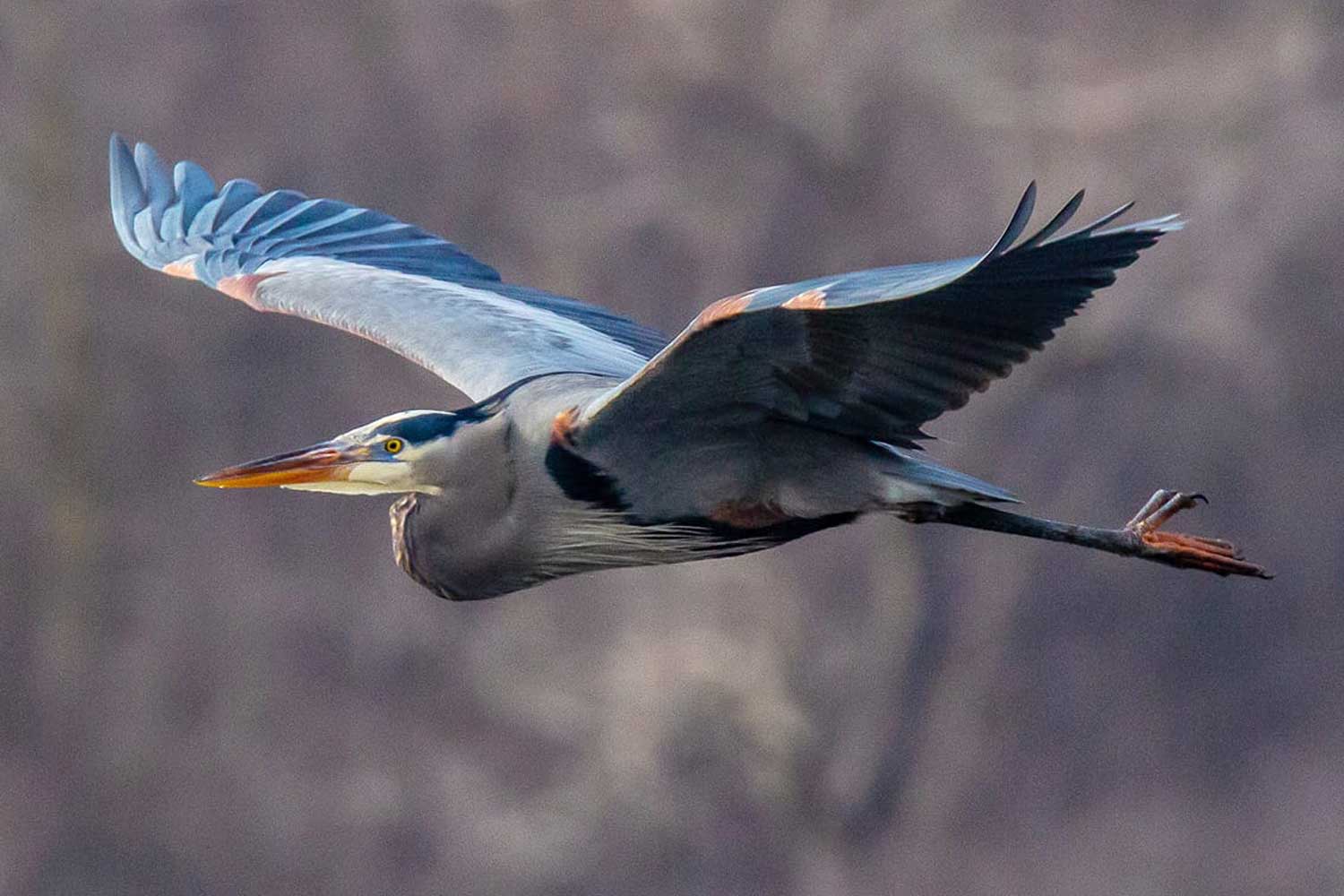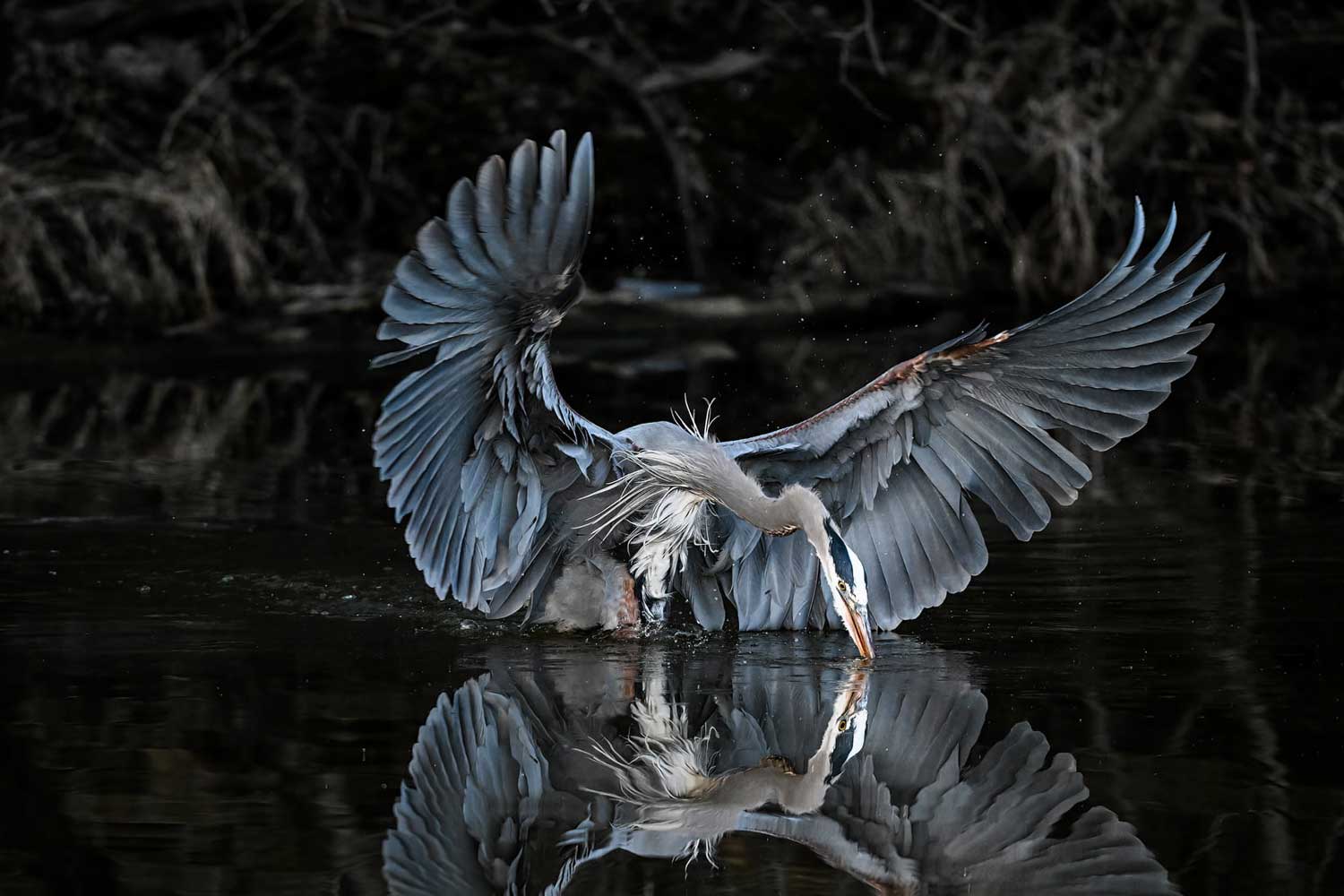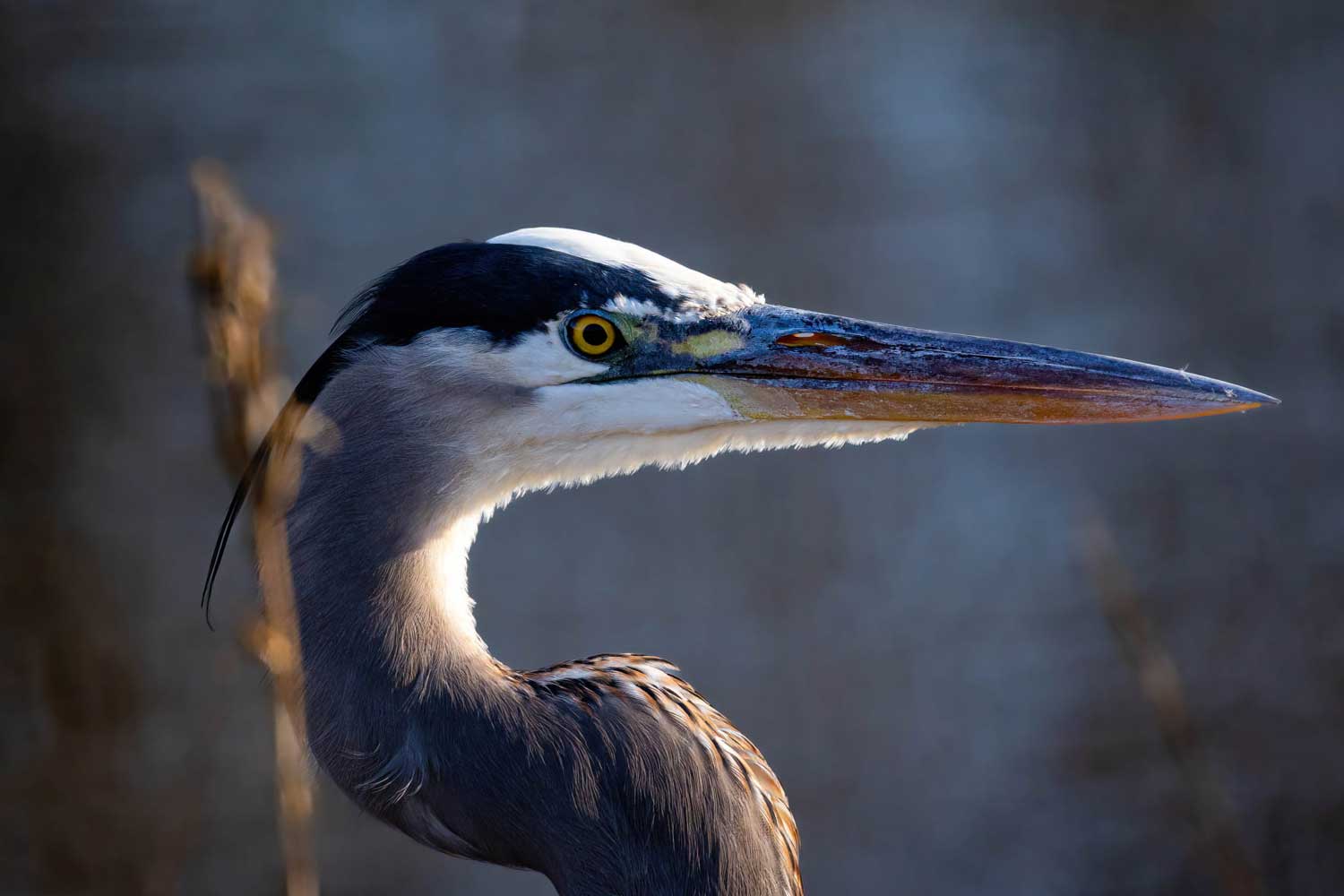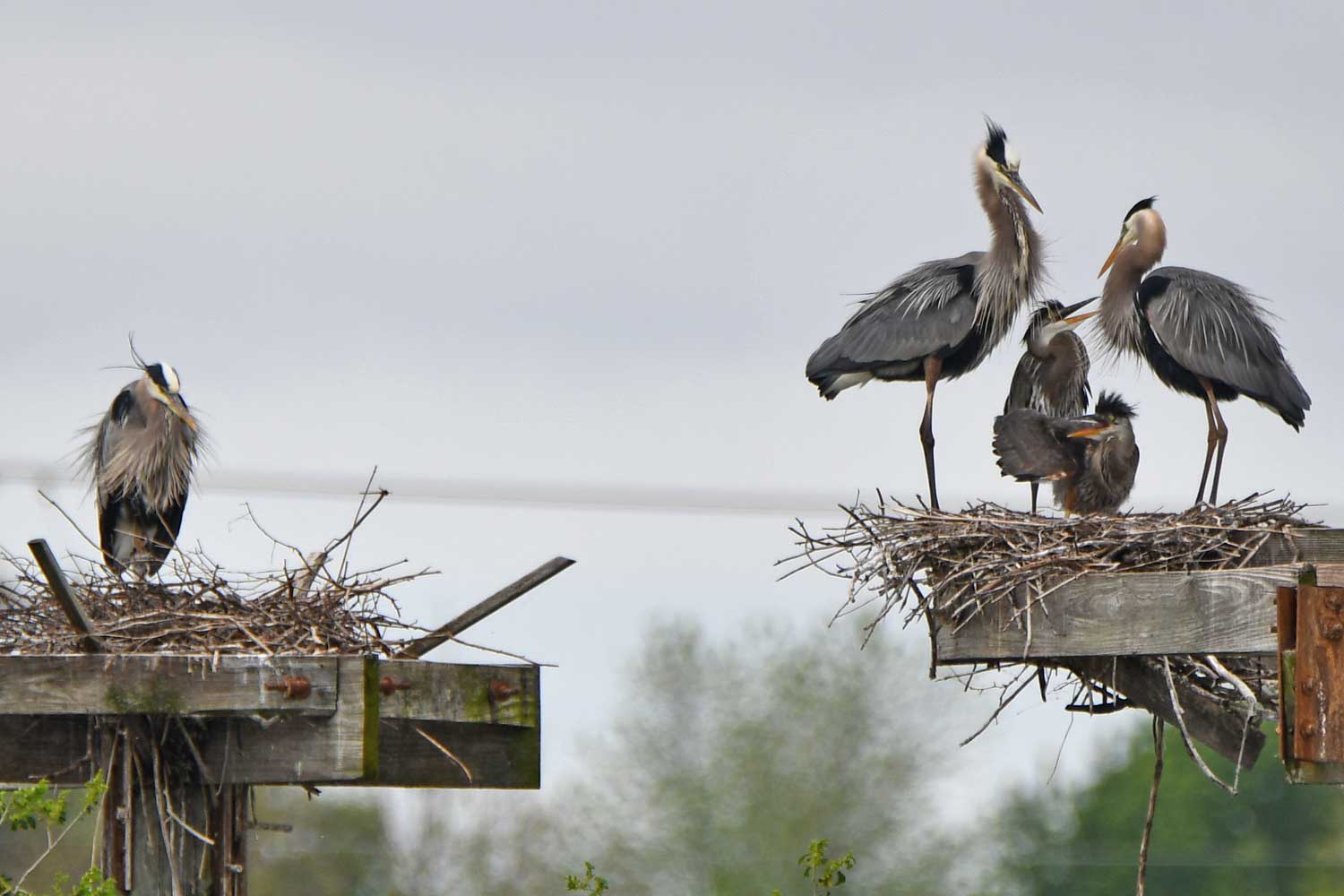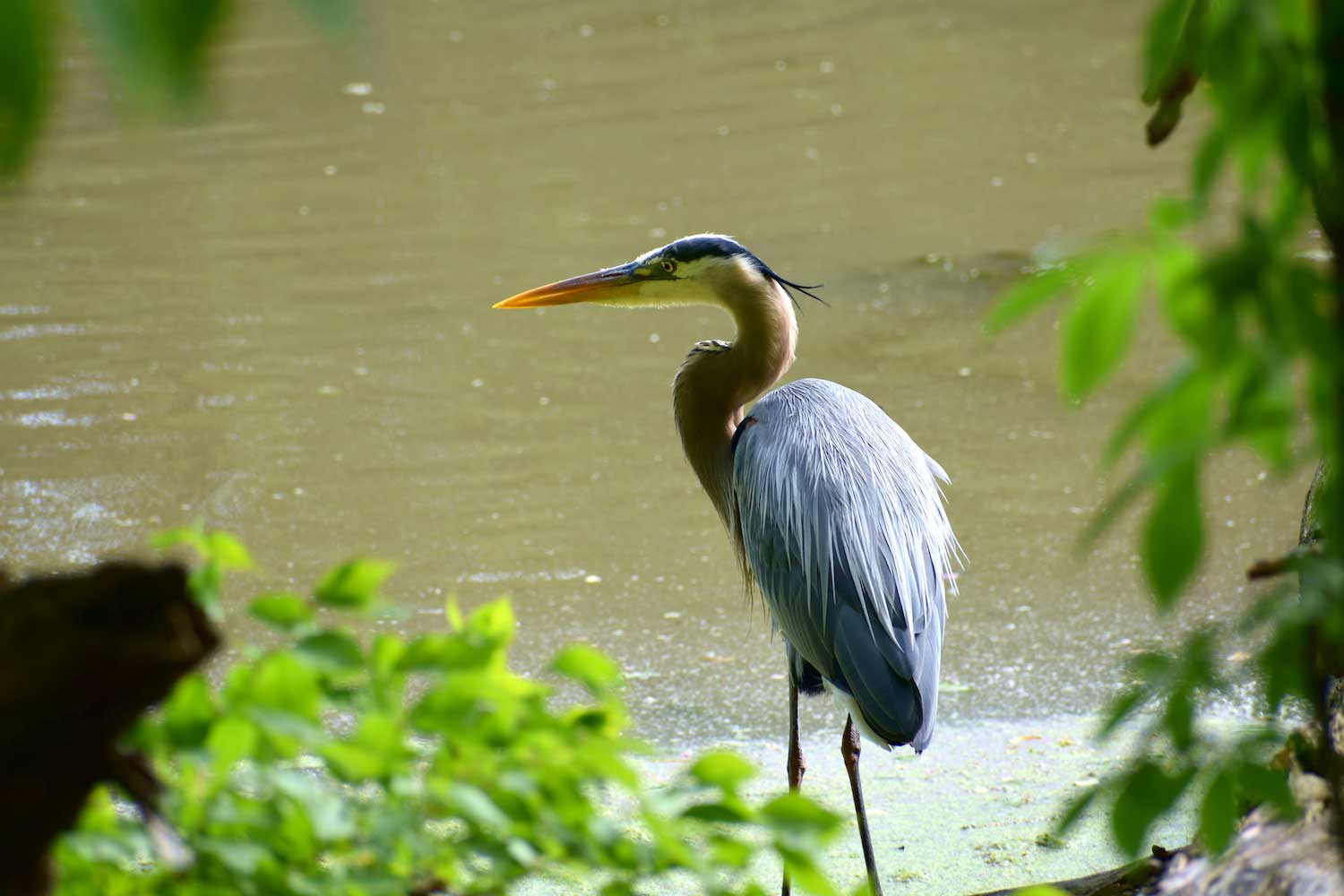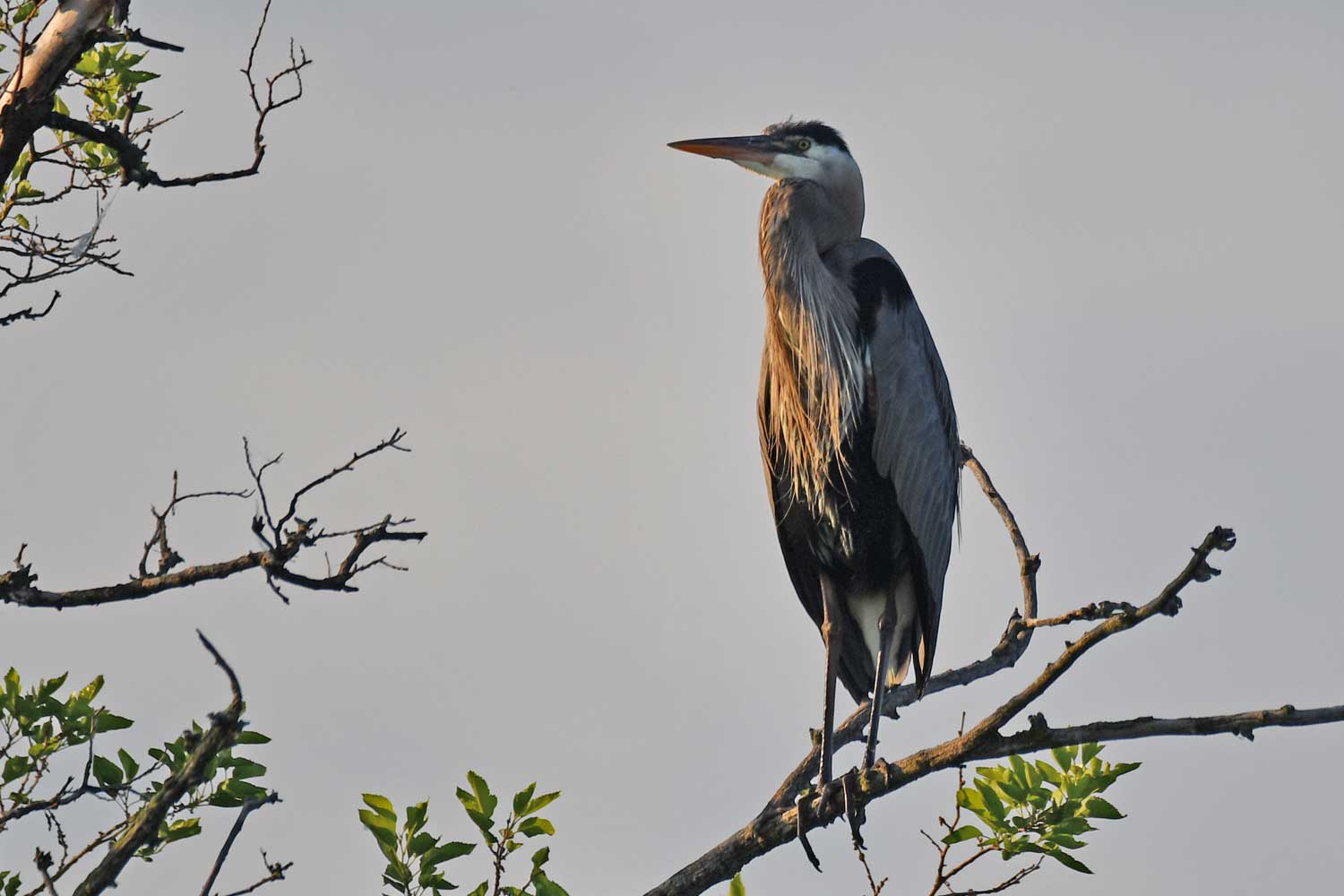Things we love: Those gangling great blue herons

About this series: While many people love nature, different people love different aspects of it. One may have a soft spot for flowers, while another gravitates toward a particular animal. And yet for others, it's all about the scenery. "Things We Love" explores those jaw-dropping parts of nature that one person finds particularly special. In this edition, Digital Communications Manager Chad Merda tells us why the great blue heron became his go-to bird.
Birds in Will County come in all shapes, sizes and colors but, for me, it doesn't get any better than spotting a great blue heron gliding over a preserve or patiently stalking its prey on the ground.
Sure, this is a fairly common bird in the area, but that doesn't make them any less impressive to see. Great blue herons have some striking features, such as their long necks, daggerlike beaks, and flowing feathers that can blow in the breeze.
For someone just getting into photography and videography, as I was a few years ago, they quickly became easy subjects to practice on. As a result, we've developed a bit of a working relationship over the years.
Zooming up close with my camera lens yields all sorts of wonderful details, such as its rusty gray neck that fades into a white head topped with touches of blue. Getting the full bird in the frame with its stick-like legs supporting the rest of its body can be equally as beautiful.
I've also found it fascinating that these birds can look quite different depending on whether their neck is extended or tucked into their body. That can provide some very different photos taken just seconds apart.
When in the air, great blue herons and their six-foot wingspans are a big, not-so-fast moving target to track through the sky. Sudden changes in flight patterns like some other birds just isn't in their playbook, which is another bonus for a rookie behind the camera.
On the ground, they wade slowly or stand like statues for what seems like an eternity, until they quickly strike their prey. Waiting for the perfect moment can be frustrating; I've hunkered down for 30 minutes without the bird even making the slightest movement. But it's also incredibly rewarding when you capture the moment it stabs into the water and pulls up a fish, snake, frog or any other creature these birds will dine on.
If you're lucky, you hit the jackpot.
Such was the case one day last summer while hanging out at Goodenow Grove Nature Preserve.
The next time you're out in the preserves and see a great blue heron waiting to pounce on its prey, take a moment to hang back and watch it do its thing.
You may see something amazing. And even if it doesn't move, you've just spent a few minutes enjoying the stress-free sights and sounds of the natural world, which always is a beautiful thing.
